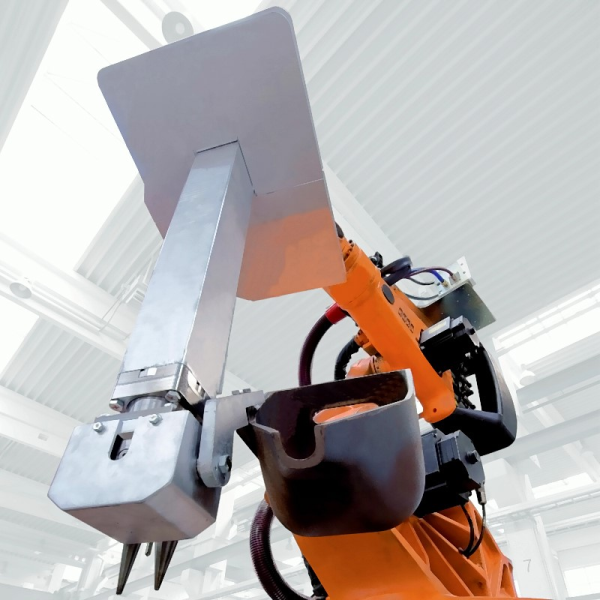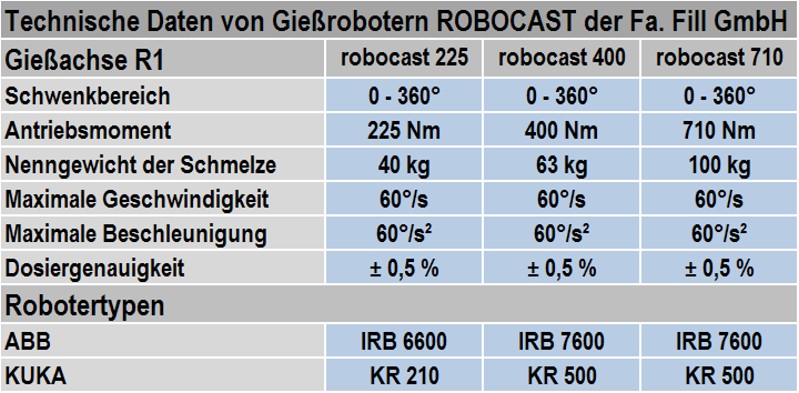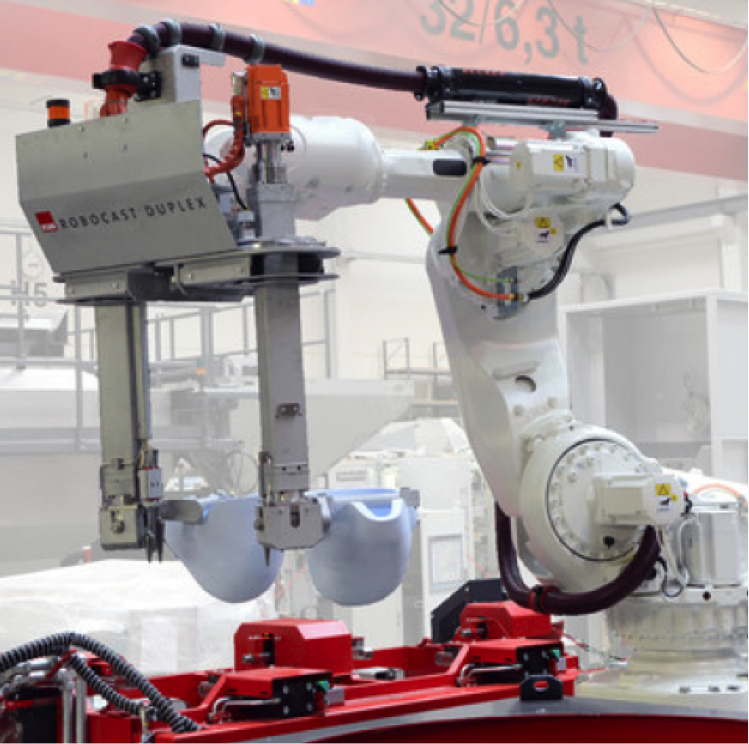Casting robot
Robot with a mounted casting ladle for automated ladling and pouring of melts, especially used in gravity die casting and pressure die casting(Fig. 1, Fill GmbH). During ladling, the desired melt quantity is measured precisely by accurate tilt-positioning of the casting ladle using a position sensing system. This results in high dosing accuracy (see Table 1, Fill GmbH)).
Even at high traversing speeds, a robot control with programmable acceleration and deceleration ramps ensures rapid but smooth conveyance of the melt to the casting position. Following low-turbulence pouring of the liquid metal into the gravity die or shot sleeve (Fig. 2, Fill GmbH), the casting ladle is turned over (if necessary, by up to 360°) at a programmable position to discharge any adhering oxide film. The casting cycle of the casting robot is freely programmable and can be adjusted to the casting location and the casting process.
A dual casting robot (Fig. 3, Fill GmbH), used in conjunction with an industrial robot, increases the cost-effectiveness of foundry operation with its two casting axes. On ladling, the desired quantity of aluminum is measured precisely by accurate tilt-positioning of the ladles using a position sensing system.Both ladles are filled with molten metal. Even at high traversing speeds, the robot control system with ist specially developed acceleration and deceleration ramps ensures rapid but smooth conveyance of the molten metal to the casting position. Following low-turbulence pouring of the molten aluminum into the dies, the casting ladles are turned over (if necessary, through 360°) ata programmable position to discharge the remaining oxide film.
The casting cycle of the “robocast duplex” (Fill GmbH) is freely programmable and can vary from one casting position to another.
The use of a casting robot provides high flexibility and cycle times can be reduced and optimized. Simple changing of robot positions with a full range of auxiliary drives (casting axis, external traversing axis, etc.) is possible using the PLC main control unit. In addition, state-of-the-art designs of castingrobots enable simple and quick replacement of the casting gear thanks to pluggable spline shafts. The technical data for selected castingrobots are given in Table 1 (Fill GmbH).
Additional references:
Casting manipulator





